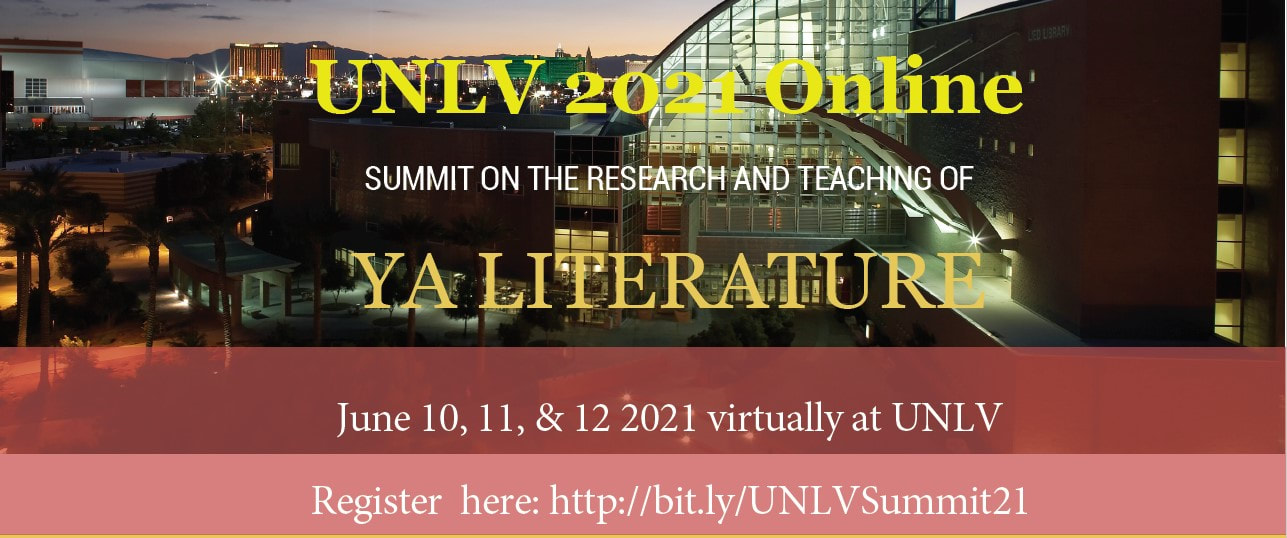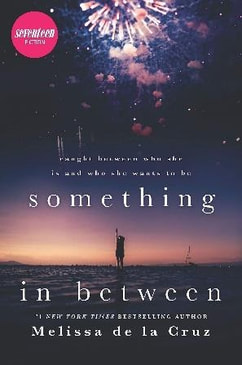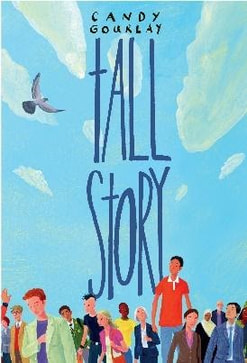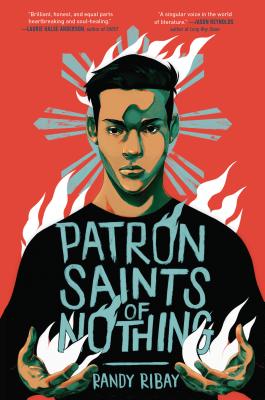Diane's post is a preview of what she will be discussing during the Summit this year. Be sure to join us!
FilipinX YA Literature
Diane Scrofano
I live and teach in the suburbs of Los Angeles, California, which, as of 2015, had a FilipinX population of half a million people, also according to Pew Research. While large numbers of FilipinX people reside in other California cities, centers for FilipinX migration include both faraway cities like New York and Honolulu, but also as close to home as Las Vegas, Nevada, where I’ll be presenting on this topic at the YA Literature Summit in June. After browsing online resource lists, I’ve read four wonderful titles that I’d like to recommend. I’ll give a brief overview of them here as May, Asian-American Pacific Islander (AAPI) History Month, wraps up. I hope you and your students enjoy these!
Melissa de la Cruz, prolific author of the Disney Descendants series as well as the Hamilton-inspired Alex and Eliza series, has created a page-turning romance novel based in part on her own experience as a teen who suddenly discovers her undocumented status. Set in a diverse San Fernando Valley suburb of Los Angeles, California, the novel follows Filipina-American teen Jasmine de los Santos, overachiever extraordinaire. As Jasmine wins a major government-sponsored award, her parents inform her that she will be unable to accept it due to the entire family’s lapse out of legal status, which they had previously hidden from the children in order to protect them.
This story offers a great opportunity for students to research and discuss the ever-changing policies concerning DACA (Deferred Action for Childhood Arrivals) as well as state and national-level DREAM Acts and their role in helping undocumented students afford college through eligibility for state or federal financial aid. As Jasmine falls in love with Royce Blakely, the son of a wealthy, conservative Congressman, she’s forced to confront both his family’s biases as well as her own. Because a connection to a politician—even a conservative one—ultimately helps Jasmine, she vows to become an advocate for those who don’t have such connections as she prepares to study law at Stanford. Students can explore the differences in public and private university resources for funding undocumented students and discuss the equity issues brought up by the fact that Jasmine might not have been able to go to college if not for the wealthy donors that provided her with a scholarship.
Finally, a great feature of this novel to note is that each chapter opens with a thought-provoking quotation (ideal for daily quick-writes or journal responses) about identity from figures as wide ranging as Aristotle and the Founding Fathers to Junot Diaz and Malala Yousefzai.
This novel by acclaimed author Candy Gourlay is narrated alternately by Andi and Bernardo, half-siblings who “grew up on the other side of the world” (p. 67) from one another. Thirteen-year-old Andi, born to a Filipina mother and her second husband, a white British man, has been raised in the U.K., and now Bernardo, her sixteen-year-old brother from Mum’s first husband, raised in the Philippines, has finally gotten the legal documentation to be join the family in the U.K. While Andi is worried about the change in the family dynamic, Bernardo has his own issues. His community in the earthquake-prone Philippines doesn’t want him to leave.
Through the interweaving of legend and coincidence, the residents of Bernardo’s town, San Andres (named fictitiously after the San Andreas fault, perhaps?), believe that Bernardo is their protector. Bernardo is eight feet tall due to a pituitary tumor, and he is named after his father, but the townspeople believe that he is a modern incarnation of legendary giant Bernardo Carpio, who disappeared while saving the town from a massive earthquake. Bernardo, our character, has an altercation with Gabriela, a formidable schoolyard bully who is also the daughter of the town’s witch, during which she is bitten by her own rabid dog. After Gabriela dies and her mother, the witch, beside herself with grief, ceases to terrorize the town, Bernardo is declared a hero.
Bernardo refuses to let superstition keep him from reuniting with his mother, though, and he proceeds on his journey to England. He begins to truly bond with his sister Andi, over basketball; Bernardo doesn’t play, but his best friend does, and so does Andi. In fact, she can’t join her school team because it’s a boys’ team, and in a show of solidarity, Bernardo agrees to play on her behalf. But on the day of the big game, a devastating earthquake hits the Philippines. Bernardo wonders if his hometown neighbors were right after all and then collapses from an aneurysm!
While Bernardo is in the hospital, miraculous news arrives from the relatives in the Philippines: while the whole region was destroyed, not a single life was lost in their village. Only one person, Bernardo’s best friend, Jabby, was reportedly missing. But even Jabby turns out to be safe: Andi promptly discovers Bernardo’s phone, which had fallen onto the floor when he collapsed, sees messages from Jabby, figures out where he is (Jabby had a habit of sneaking into San Andres’ under-construction basketball dome, Bernardo had told Andi), and sends rescuers to him. The end is happy for all: Bernardo recovers from his aneurysm, he has an even closer bond with his sister Andi, who saved the life of his best friend, and, despite living in England now, Bernardo is still the village hero. According to one elder, Bernardo’s “power reaches across the world and will always keep [his] village safe” (p. 296).
Just in time for June Pride Month, I bring you The Importance of Being Wilde at Heart, by R. Zamora Linmark. Protagonist Ken Z finds himself caught up in a whirlwind Spring-Break romance (and his first homosexual relationship) with Ran. Ken Z’s closest friends, both transgender, would normally be the first to know about Ken Z’s new relationship, but Ran has asked him to keep it a secret. Ran is from the wealthy and militaristic region of North Kristol, a fictitious island, while Ken Z is from what he refers to as the “Turd World” South (p. 9).
With this in mind, it’s helpful to know that R. Zamora Linmark “splits his time,” as the book jacket author blurb puts it, between Manila and Honolulu. The juxtaposition of extreme wealth and extreme poverty that one might see going back and forth from the U.S. Hawaiian Islands and the Philippines and which can be seen moving from neighborhood to neighborhood even within the same U.S. city, will inspire important discussions of social class among students. The widening gap between rich and poor is immediately apparent when Ken Z has to disguise himself to be allowed into the gentrified tourist trap where he meets Ran. The two immediately bond over their shared love of author Oscar Wilde, the Irish-born author whose “gross indecency” trial in 1895 greatly set back LGBTQ+ rights in Great Britian.
This constantly surprising novel has elements of dystopia as the limitations of the “perfect” North are revealed, and magical realism, too, as Oscar Wilde himself appears to console and enlighten Ken Z. As Ran disappears, Ken Z must decide how much of Wilde’s advice about living passionately in the moment he wants to follow while setting limits so that his relationship with Ran does not become toxic, as Wilde’s did with his longtime lover, “Bosie.” This novel would pair excellently with any classical Oscar Wilde text, as references to Oscar Wilde’s life and work appear and resonate throughout the novel, and there is a helpful chronology of Wilde’s life at the end of the book. From haikus to homework assignments and from prayers to texts, the styles Ken Z uses to tell his story vary as well.
Through Ken Z’s first-person narration as well as his conversations with best friends Estelle and CaZZ, students can tackle difficult questions: How much of our liberty are we willing to sacrifice for security? How do we reckon with the colonial legacy, a legacy which, as one thought-provoking review of this novel pointed out, brought incredible destruction to Pacific Islanders but also brought them the beauty of authors like Oscar Wilde?
Protagonist and first-person narrator Jay was born in the Philippines to an American mother, a doctor, and a Filipino father, a nurse. They raised Jay in the U.S., in Michigan, where he lives a comfortable, if unfulfilling, suburban life. As Jay begins to dread the end of his senior year and the state college that awaits him, he finds out that his cousin Jun, raised in the Philippines, has died under mysterious circumstances. Jay’s dad won’t give him the full story, but it has to do with drugs, so there is disgrace involved, and there won’t even be a funeral. Jay regrets having lost touch with his cousin a few years previously. Jun was a special soul, sensitive and socially conscious. Jay cannot rest until he finds out what happened to Jun and makes sure the family honors him in death.
In the Philippines, things get complicated. Jay suspects that his uncle, Jun’s own father, Tito Maning, may have had his son killed. Tito Maning is a police officer under the brutal Duterte regime, which came to power when a devastated and frustrated populace has elected a leader who allowed vigilante groups to execute supposed drug offenders on sight. At the same time, Tito Maning’s daughter, Jay’s cousin Grace, is running a clandestine website to share the stories of people unfairly killed by the Duterte regime. Eventually, and thankfully for the family, Tito Maning was not the one who had Jun killed; in fact he had tried to save his troubled son from an untimely death. Finally, Jay convinces the family to have a small memorial for Jun and mourn him as he deserves. While solving the mystery of Jun’s death, Jay also learns that his aunt and her partner have founded an organization that rehabilitates sex trafficking victims, and ultimately, Jay will decide to take a gap year after high school in order to volunteer with the group.
Throughout his journey, Jay struggles with his identity as being part of the FilipinX diaspora. Early on in the novel, Jay is told by his clueless white friend Seth that Jay is “basically white” (p. 37). Jay hasn’t read the works of Jose Rizal or Carlos Bulosan. Tito Maning shames Jay for not speaking Tagalog and for believing the mainstream international media’s criticism of Duterte and his drug-fighting tactics. In a concise overview of Spanish, American, and Japanese occupation, Tito Maning shows Jay and the readers of the novel the ravages of colonialism and and the islands’ continued post-colonial struggle.
| Diane Scrofano is a tenured English instructor at Moorpark College in southern California. She holds an MA in English and an MLIS, as well as teaching credentials in English and library media services. Prior to assuming her current position as a community college professor in 2007, she worked as a high school English teacher for two years and a high school librarian for another two years. |







 RSS Feed
RSS Feed